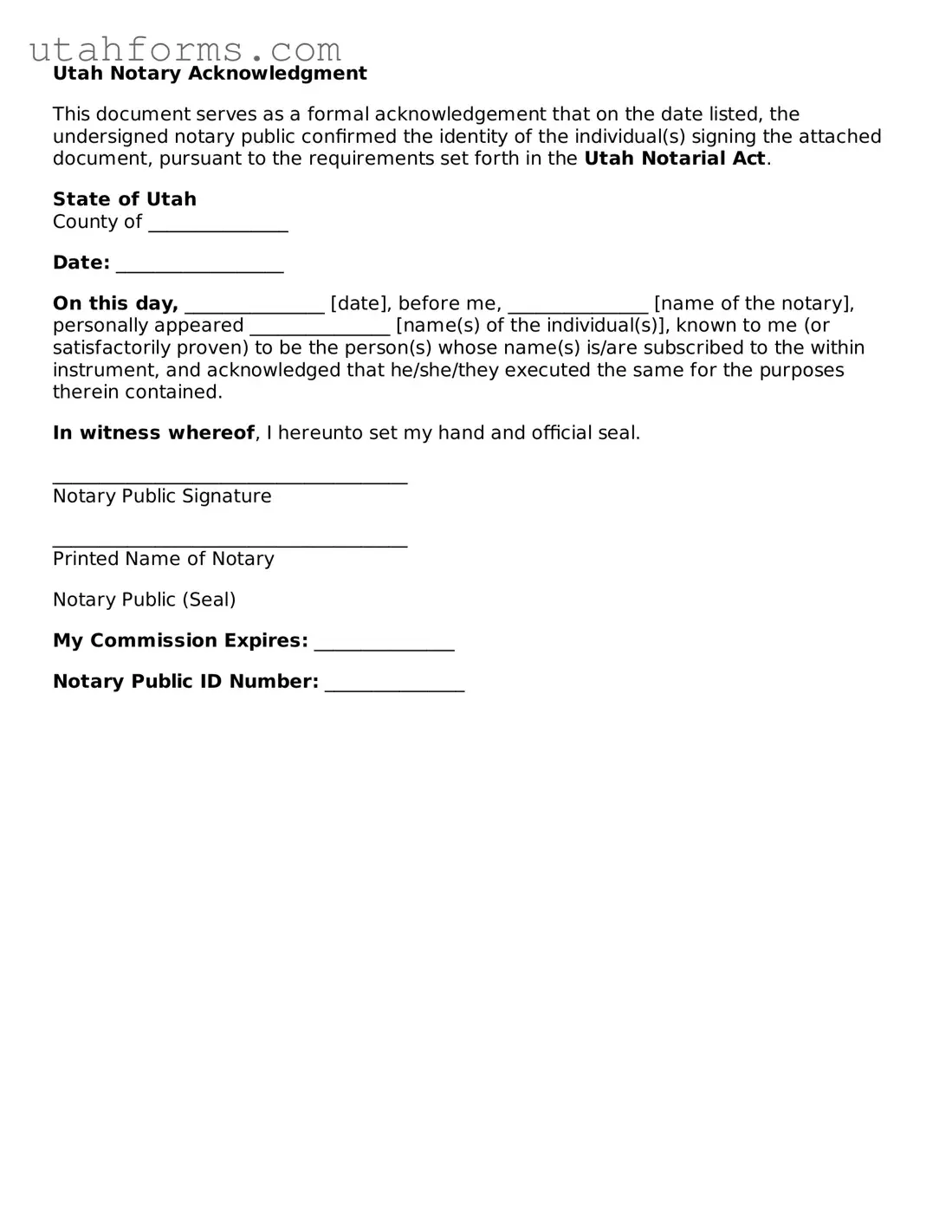Free Notary Acknowledgement Form for Utah
The Utah Notary Acknowledgement form is a vital document used to verify the authenticity of signatures on legal papers, ensuring that signers are fully aware of the contents they are signing. This process is carried out by a notary public, who confirms the identity of the signers. It plays a crucial role in the prevention of fraud and in the facilitation of trustworthy transactions.
Fill Out My Document
